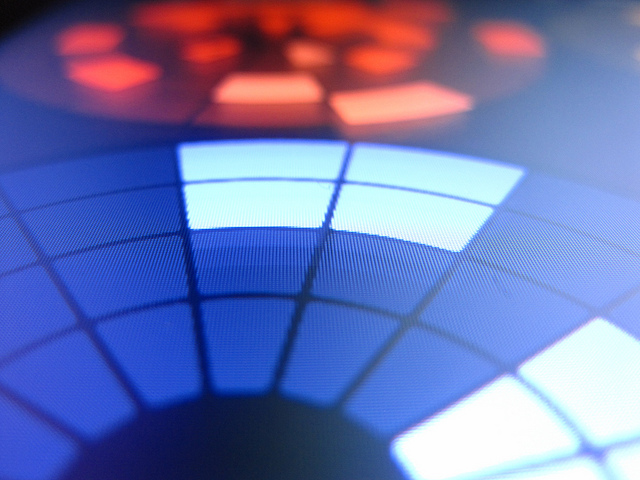
We continue our 3.14 celebration with a round-up of circular logic.
There’s no reason apart from the printed score to assume music has to be divided into grids laid on rectangles. Even the “piano roll” as a concept began as just that – a roll. Cycles the world around, from a mechanical clock to Indonesian gamelan, can be thought of in circles.
Imagine an alternate universe in which Raymond Scott’s circle machine – a great, mechanical disc capable of sequencing sounds – became the dominant paradigm. We might have circles everywhere, in place of left-to-right timelines now common in media software. Regardless, it’s very likely Scott’s invention inspired Bob Moog’s own modular sequencers; it was almost certainly the young Moog’s exposure to the inventions in Scott’s basement that prompted that inventor to go into the electronic music business, thus setting the course for music technology as we know it.
See:
Raymond Scott’s Circle Machine
For more background: “Circle Machines and Sequencers”: The Untold History of Raymond Scott’s Pioneering Instruments [as reprinted from Electronic Musician]
One superb modern re-creation, via Synthtopia
Scott’s creation was shaped the way that it was partly out of mechanical necessity. Now we’re gifted with the ability to make any form we like for our electrified music tools. Circles can have appeal not because they’re somehow novel, but for just the opposite reason: they’re ubiquitous, intuitive, and geometrically elegant. So, let’s first consider these in their most abstract, in software.
Euclidean Rhythms
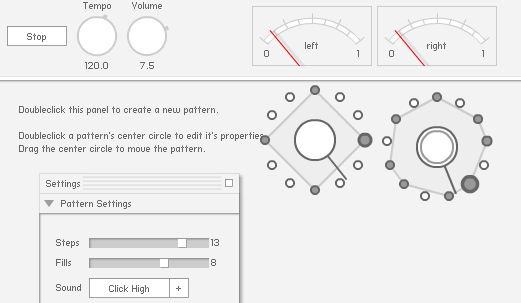
Incredible things are happening to our understanding of music theory as the gap between fields is shortened. Say what you will about the state of communication in our modern society; for the self-motivated, the trip “across the quad” (between academic departments) has nothing on the trip across the Internet.
Godfried Toussaint, a computer scientist with a strong math background based at Montreal’s McGill University, has a whole body of fascinating writing linking math, geometry, and music. One research paper has had a big influence on many of us, myself included. Here’s the beauty of math: an algorithm developed by Euclid in Alexandria around 300 BC also works for calculating timing systems in neutron accelerators and makes nice poly-rhythms for music. It’s rather amazing we don’t talk to each other about math more often.
Toussaint’s paper:
The Euclidean Algorithm Generates Traditional Musical Rhythms [PDF, 2005]
Our friend wesen wrote about the technique, suggesting it could be used to generate new rhythms, and included code in Lisp:
Generating african rhythms using the euclidean algorithm
wesen even made code for his amazing MiniCommand sequencing box, which I hope we’ll see more of this year. (I should have some time to work on it myself.) The actual demo is part of the way through the video:
The algorithm – the recent Bjorklund reinterpretation of Euclid’s millenia-old work – has in turn found musical life in other languages:
Python – the bjorklund algorithm and generative music[astomo.us]
Ruby – Rhythm Generation With an Euclidian Algorithm [Aleksey Gureiev]
More Ruby – jvoorhis GitHub
Java – Generating Musical Rhythms [Kristopher Wayne Reese]
Pure Data + Java – Dave Poulter
Flash/ActionScript (pictured above) – Euclidean rhythms [Wouter Hisschemöller]
Max for Live (pictured below) – Euclidean sequencer [Robin Price]

I’m implementing a touch interface for it now using Pd, Processing, and Android; I had hoped to share it by now, but I’m still fleshing it out – I’ll give it away when it’s done.
You’ll notice in these, too, the similarity to the original Scott Circle Machine, down to the sweeping arm. But that’s a benefit: glancing at them on paper, Mozart and Haydn look the same, and they use the same musical technology, but think of the musical variety that results.
A Few Circular Sequencers
Circular sequencing interfaces are plentiful – indeed, I hope that this story prompts lots of people to say “hey, what about …?” Here are a few examples.
DominoFactory’s dial uses drifting circular geometries to control musical patterns. Created by Hiroshi Matoba, a young designer/DJ, it’s one of a body of work this student creator is building:
17 Dec, 2010
at ImageRama in Kyushu University(Fukuoka/Japan)dial is a software sequencer using circle to control loop sequences in real time. I imply “speed sync” circular notation system which differ to “angle sync” in my past work “Overbug”.
Now under developing with openFrameworks and Bullet Physics. I use ofxConsole for custom CUI in this version.
*ImageRama is one night event hosted by Genda lab. in Kyushu univ., we setup surround sound(5.1ch) and 1 full HD projector. thank you for all stuff!!
See also Matoba’s earlier Overbug, which assembles polyrhythms in lacy, overlapping wheels, like some strange, elaborate clockwork:
You can download it for yourself for the Mac; it even has Snow Leopard support.
Also from Japan, Nao Tokui has taken these ideas in another direction, still, with “mashup” application and, in three dimensions, his original Sonasphere. The latter was one of the first interfaces to really fire my imagination as far as alternative user interfaces and three-dimensional sequencing.
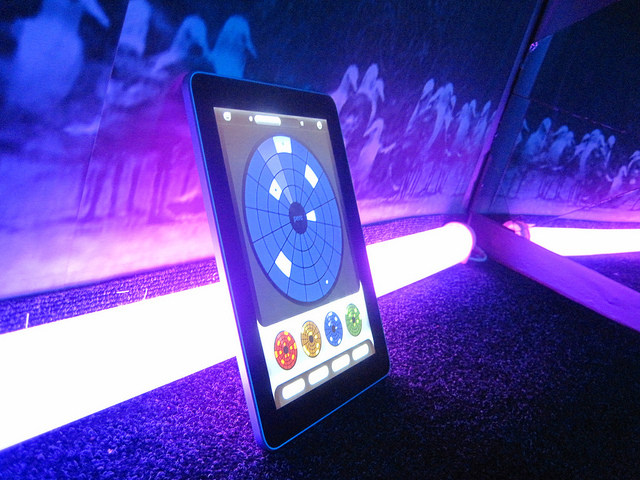
For an instance of a commercial application, see the iPad Loopseque, the development of which we profiled extensively here on CDM in August:
Loopseque, New iPad App, Offers Circular Sequencing and Visual Inspiration
The one shortcoming for me of that application is the inflexibility of the grid, which is why the Euclidean ideas above interest me, but it’s still a lot of fun.
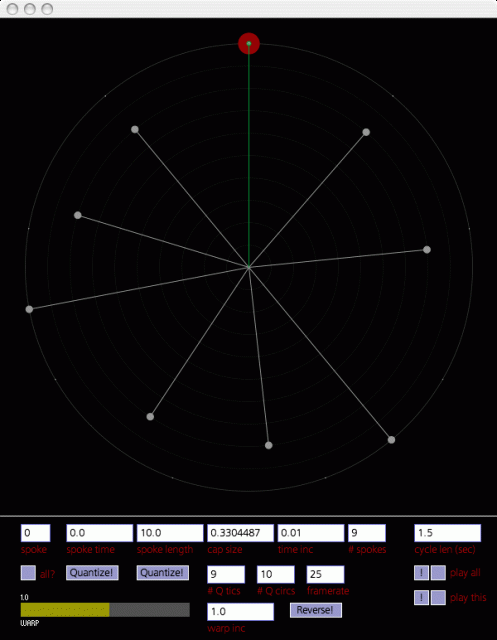
Dan Trueman (on the faculty at Princeton) built his own Cyclotron for experimentation with cycles, with work going back to 1996. The clever invention here is the use of the spokes themselves as musical information. Quite a lot more detail and code in Processing and ChucK:
Cyclotron project page
Rui Penha and Polygons
Rui Penha deserves his own category here, I think, as he’s done a great deal of research. He has worked with polygonal shapes as a way of displaying evenness in rhythms, and he’s built not only novel interfaces, but entire musical compositional environments using these paradigms. They’re all downloadable, too.
Instrument A, pictured below, uses sampled sounds and pre-composed loops which you can then assemble into a layered composition.
Gamelan, in the video at the top of this story, uses cyclic, circular notation to make interlocking parts of music more visible, in the style of an Indonesian ensemble. I was struck by this myself as I’d constructed a (much cruder) demonstration of the same idea for a talk in Ireland; here, Rui builds it into an entire interface. Also, there’s a meaning to the symbology of the circle: Gamelan looks for other networked players with which it can interact, making this a communal experience – and it can even be used to play a real gamelan ensemble, via robotic apparatus controlled wirelessly.
Políssonosis perhaps the most sophisticated of all of these, mapping those shapes into three dimensions and making the evenness of rhythms more apparent. See video, top, and the same ideas below.
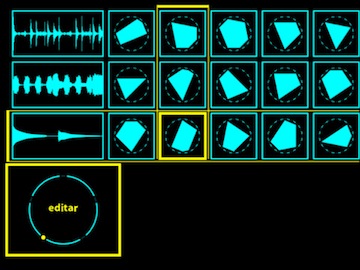
Hardware and Kinectic Art
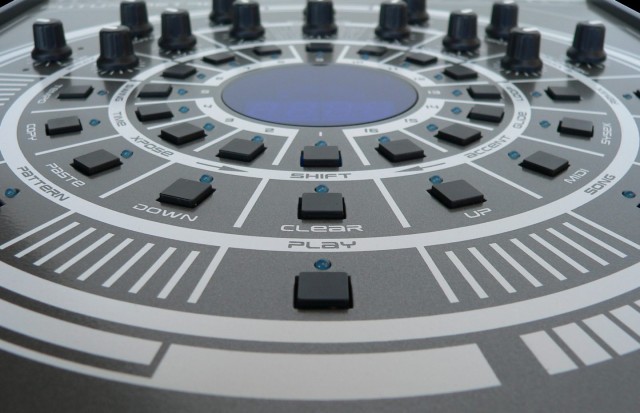
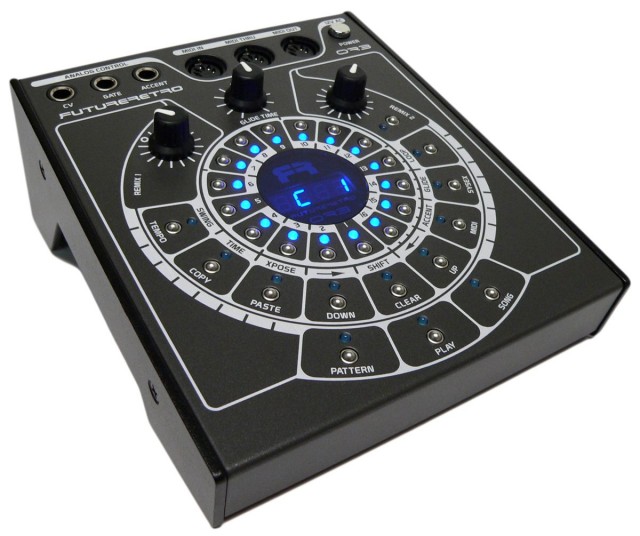
No discussion of circular design would be complete without the legendary synthesizers of FutureRetro, which uses a cyclical interface to divide patterns and even arranges synth parameters around the rotational theme. You can now pick up an Orb for $550.
It’s worth coming full (cough) circle here and revisiting the mechanical ideas, as I think part of what grounds these abstractions is the progression of time in physical contraptions. That’s what inspires the rotating arms above and so on. Because it’s so fundamentally tied to a motor, there are too many rotating soundmakers to name, but here are a couple. They’re inspired by a discussion following our post last month:
Music, Like Clockwork: Modular Music Boxes with Rotating Wheels, Inspired by monome
Invisible Rhythm worked from the notion of a music box to make their analog drum machine Rhythm 1001.
See also the Conspiring machine – thanks to an unfortunate use of Flash, I can’t link directly easily, but head to http://www.kristoffermyskja.com/, choose work, and then select Conspiring Machine (or some of the other, related ideas) from the left-hand column.
I’m going to turn loopy if I keep going, so I’ll leave it there. But have you found circular sequencers to be musically useful? Are there hardware or software designs you appreciate that I missed here? Research worth checking out? Or are you committed to the rectangle – and if so, can you explain why?
Happy PI day. May your oscillations always be in phase.